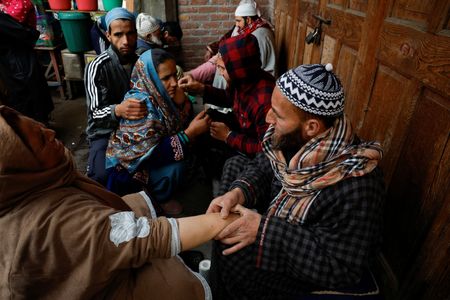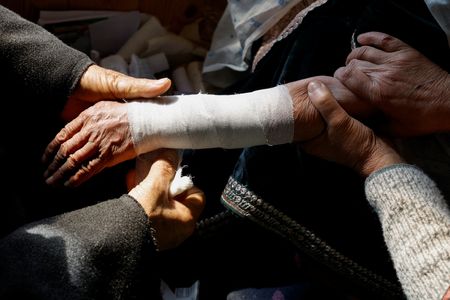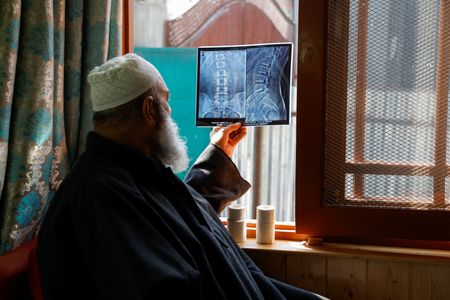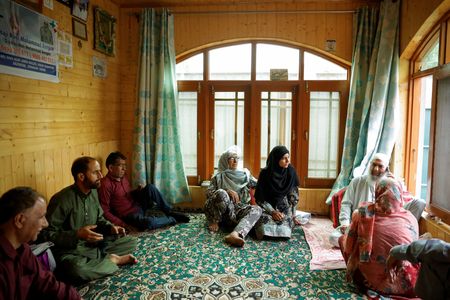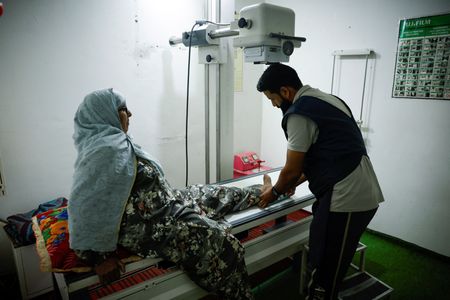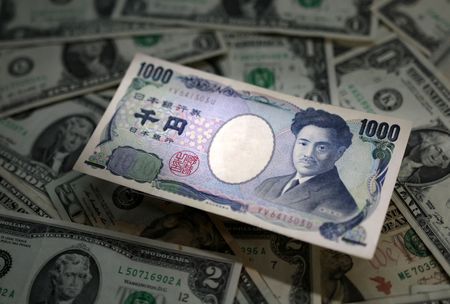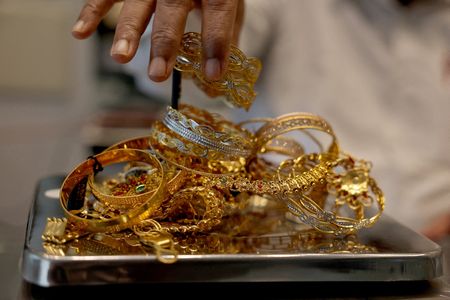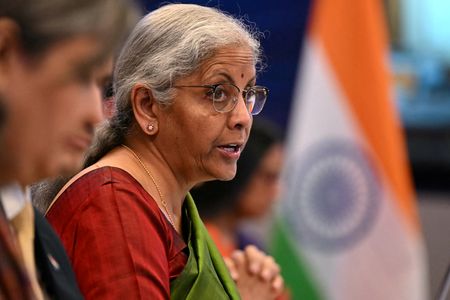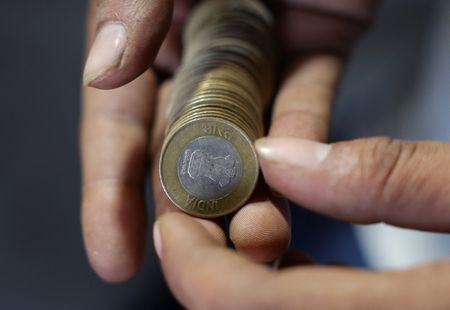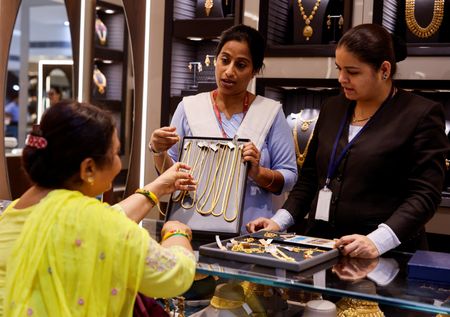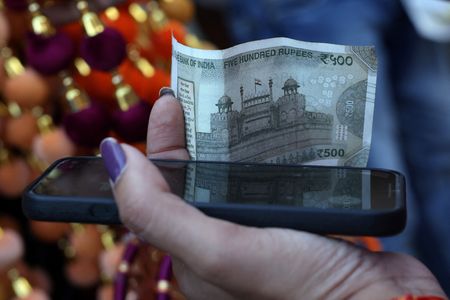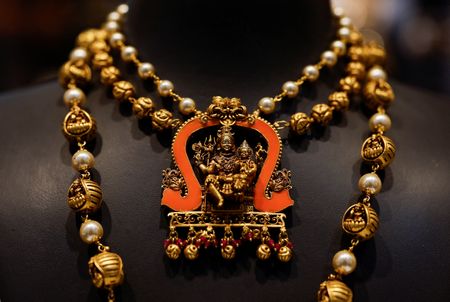By Sharafat Ali
SRINAGAR (Reuters) – After hospital doctors told Ghulam Mohammad Mir, 60, that surgery on his injured leg following a road accident was too risky, he turned to a more traditional treatment in India’s Jammu and Kashmir territory – bonesetting.
Mir suffered multiple leg fractures in the accident a year ago and doctors at the hospital in the region’s main city of Srinagar advised against surgery due to underlying medical conditions.
So he chose a centuries-old practice that typically involves massaging the affected area, wrapping it with cloth or medical tape, and reciting holy verses.
“After four months of treatment here, I started walking on crutches and now I am doing well,” Mir said.
Many patients believe bonesetters possess a spiritual, healing touch and are more effective than modern medicine, although mainstream medical experts say it can be risky and has limitations.
Noor Mohammad, a third-generation bonesetter who has been practising for 35 years, sees scores of patients daily and agrees bonesetting doesn’t have all the answers.
“We handle minor fractures and muscle sprains here and refer others to an orthopaedist for treatment,” he said.
The practice is also popular in other parts of India and some developing countries, and relies heavily on ancestral skills. By placing their thumb on the broken bone, the bonesetter assesses the intensity of the injury through touch.
“It is a God-given ability. Now we use modern technology like X-rays to assess the gravity of the injury,” Mohammad said, adding that the treatment is cheaper and takes less time.
Mohammad’s children and brothers are also involved in the practice.
His niece, Nargis, is pursuing a medical degree to become an orthopaedist, aiming to merge modern techniques with the family’s legacy.
“My focus would be the treatment of women and to carry forward the legacy,” she said.
However, medical experts such as Dr Altaf Kawoosa, head of the Orthopaedics department at the Bone and Joints Hospital in Srinagar, caution against reliance on traditional methods.
“We have seen instances where the damage was so severe that amputation was necessary. In these situations, people should at least seek help from those with basic knowledge… patients must consult professionals,” he said.
(Writing by Fayaz Bukhari; Editing by Sudipto Ganguly and Neil Fullick)

